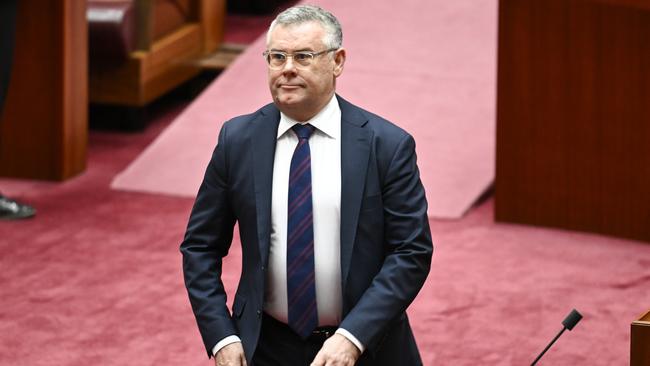Average wage rises in new pay deals hit 27-year high
A lucrative pay deal for 73000 Victorian nurses drove up average EBA wage rises.

Workers covered by new enterprise agreements in the December quarter received an average pay rise of 4.8 per cent, the highest quarterly result since 1997, Department of Employment and Workplace Relations data shows.
Department figures show wages growth in enterprise agreements has outpaced the inflation rate for five consecutive quarters, with the 17-year high driven by a Victorian government deal with nurses and midwives in which 73,000 public sector employees received average pay rises of 6.7 per cent.
About 2.62 million employees are now covered by an agreement, the highest number since 2014, and up from 2.21 million workers in the September quarter last year and 2.03 million employees at the end of 2023.
The industries with the highest wage increases were administrative and support services (6.4 per cent), construction (5.8 per cent) and healthcare and social assistance (5.6 per cent).
The industries with the lowest average annual pay increases included information media and telecommunications (2.4 per cent), accommodation and food services (3.2 per cent), and arts and recreation services (3.2 per cent).
Workplace Relations Minister Murray Watt said Labor’s changes to the workplace laws had reinvigorated access to enterprise bargaining, directly contributing to wage increases.
“By making bargaining easier, we’ve seen more agreements made in the past year than ever before,” Senator Watt said.
“More agreements mean more money in the pockets of working people.”
According to the December quarter data, average public sector pay rises in new agreements were 5.4 per cent, up from 3.5 per cent in the prior three months. Average private sector pay rises were largely unchanged, up just 0.1 per cent to 4 per cent.
The combined average increase for the 994 new agreements with quantifiable wage rises approved in the December quarter, and covering 243,700 workers, was 4.8 per cent
For the 8400 enterprise agreements covering 1,685,729 employees that were current as at December 31, and had a quantifiable wage increase, the average annual wage rise was 3.7 per cent. This compares with 3.5 per cent in the September quarter and 3.1 per cent in the December quarter 2023.
While overall wage growth is forecast to fall from 4 per cent to 3 per cent over the current financial year, the budget papers are predicting real wage growth over the forward estimates.
According to Treasury, wage growth will be 3.25 per cent in the next two financial years, while inflation will be 3 per cent and 2.5 per cent respectively.
Treasury is forecasting annual real wage growth of 1.25 per cent by June 2027 with the wage price index to grow by 3.75 per cent, compared to inflation at 2.5 per cent.
Senator Watt said Peter Dutton and the Liberals had “made it clear workplace rights are on the chopping block if they are elected”. “We’re finally seeing wages growth outpace inflation and all that progress will be lost if the Coalition get their way,” he said.







To join the conversation, please log in. Don't have an account? Register
Join the conversation, you are commenting as Logout